International keyword research? Skip all the dry theory! In three simple steps, let me show you how to find exactly the keywords that will really boost your international SEO. No unnecessary frills – just tools, tips and proven examples from a German SEO consultant. All you need to get a head start is five minutes of your time!
What to expect in this article
Key question: What makes international keyword research truly successful?
So-called keyword research often consists of huge lists. Unsorted and often full of keywords that may or may not be relevant to you. Nobody can really work with that. Don’t pay for it!
If you want your keyword research for SEO to be worth the money, you should expect the following three or four things:
- Relevant (!), fully researched keywords, including search volume and competition
- Meaningful keyword clusters that reflect topics that are important to your business
- A clear prioritisation from most to least important
- Optional: cost-per-click data for SEA activities
International keyword research should include keywords in all relevant languages and will usually include a tab of keywords for each language in which you wish to perform SEO.
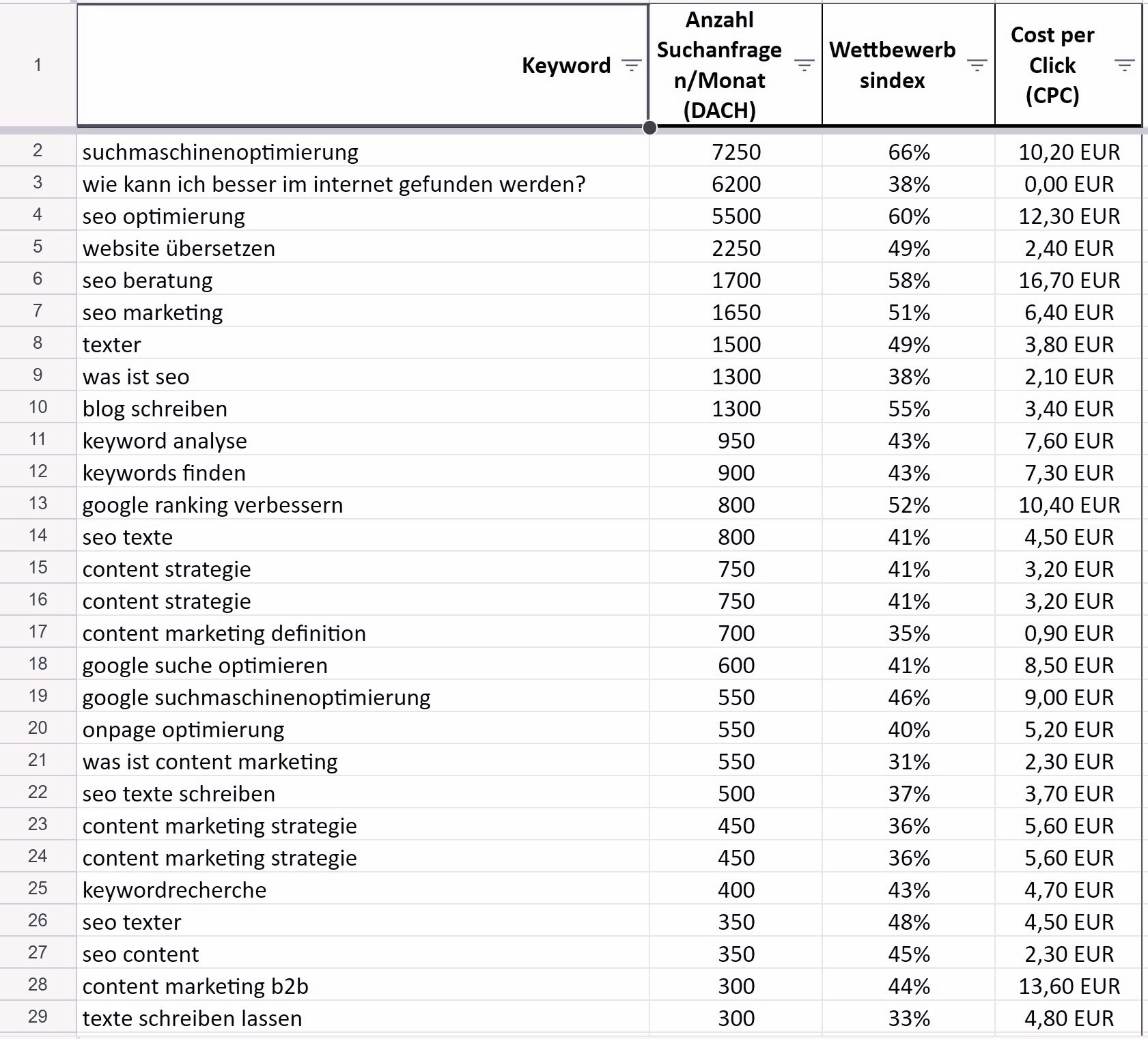
For international SEO, I use these keyword tools
There are 1,001 SEO suites and dozens of specialised tools that you can use for international keyword research. There is no right or wrong way to do this – it is simply a matter of preference. In my experience, the following keyword tools have proven useful:
- Sistrix: Sistrix is a German SEO suite that you can use for everything from keyword research to monitoring and SEO reporting. I’ve been using Sistrix for ages and have a special contract for long-standing customers. With that, I pay €153 per month. To get started, the starter package for €119 per month is enough. Instead of Sistrix, you could also use Semrush for international SEO.
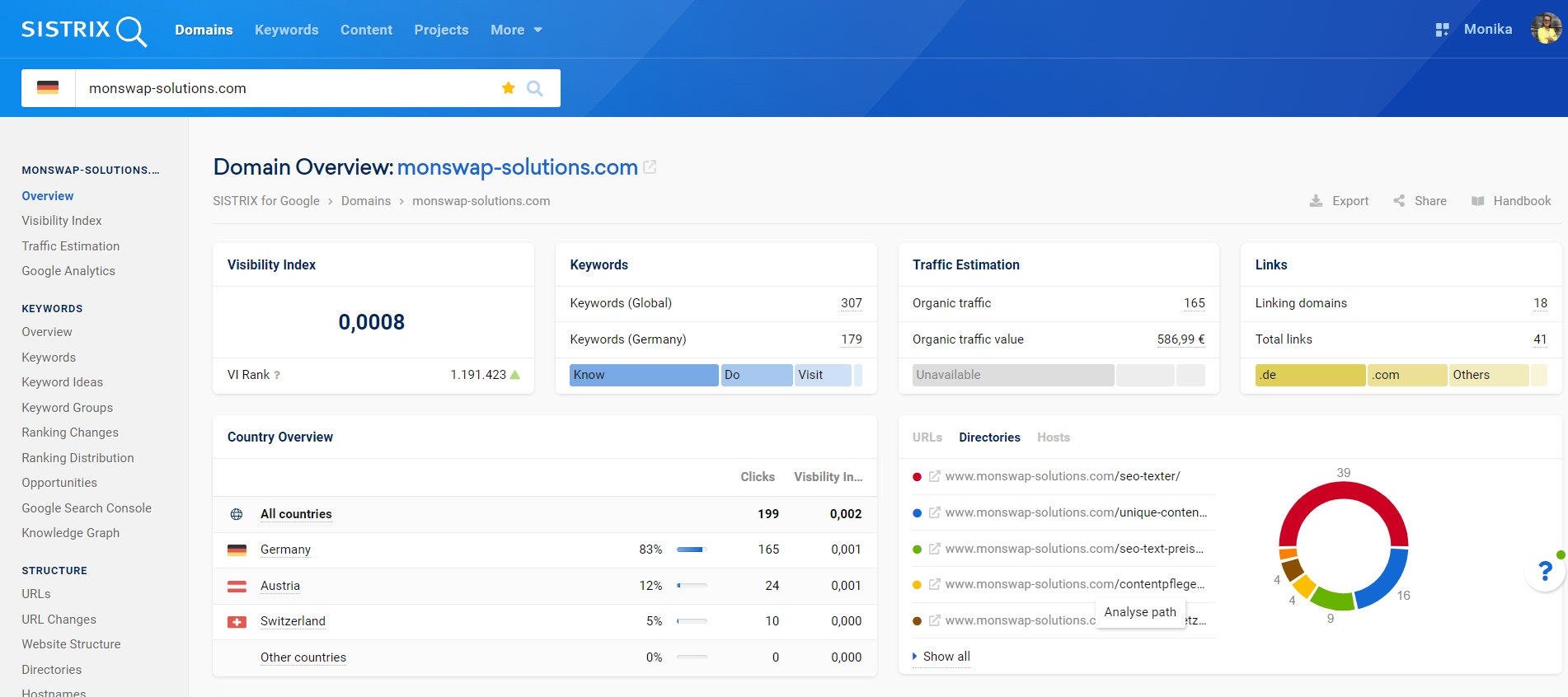
- KW-Finder by Mangools: I use their keyword finder to look up keyword ideas and get inspired by related keywords and questions. I pay €478.80 per year for my premium account. If you are just getting started with SEO, the basic account for €269.10 per year is perfectly sufficient. Besides, Mangools also includes various apps that you can use for keyword research, to monitor rankings or to optimise SERPs.
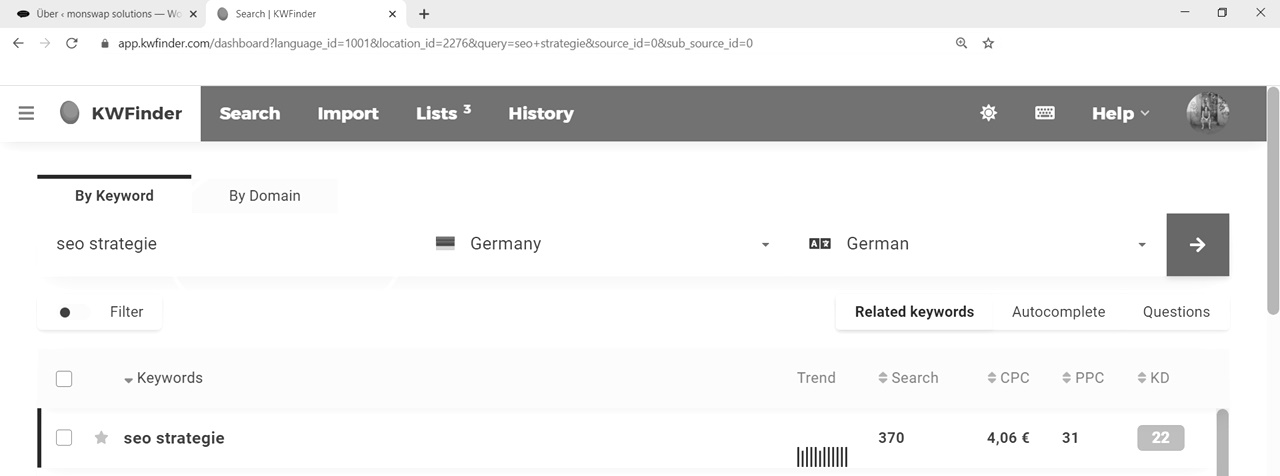
Alternatively, you can also use free tools such as the Google Keyword Planner or Keyword Shitter to find relevant international keywords. It’s just more complicated and somewhat less precise.
As an international SEO consultant, working with paid tools simply makes my life easier.
Step 1: Finding international keywords
There are several ways to find relevant keywords. I always use all four of them. This way, I make sure that I don’t miss any important search terms and that the keyword research is comprehensive.
Before I can get started, I create a new keyword list in Sistrix.
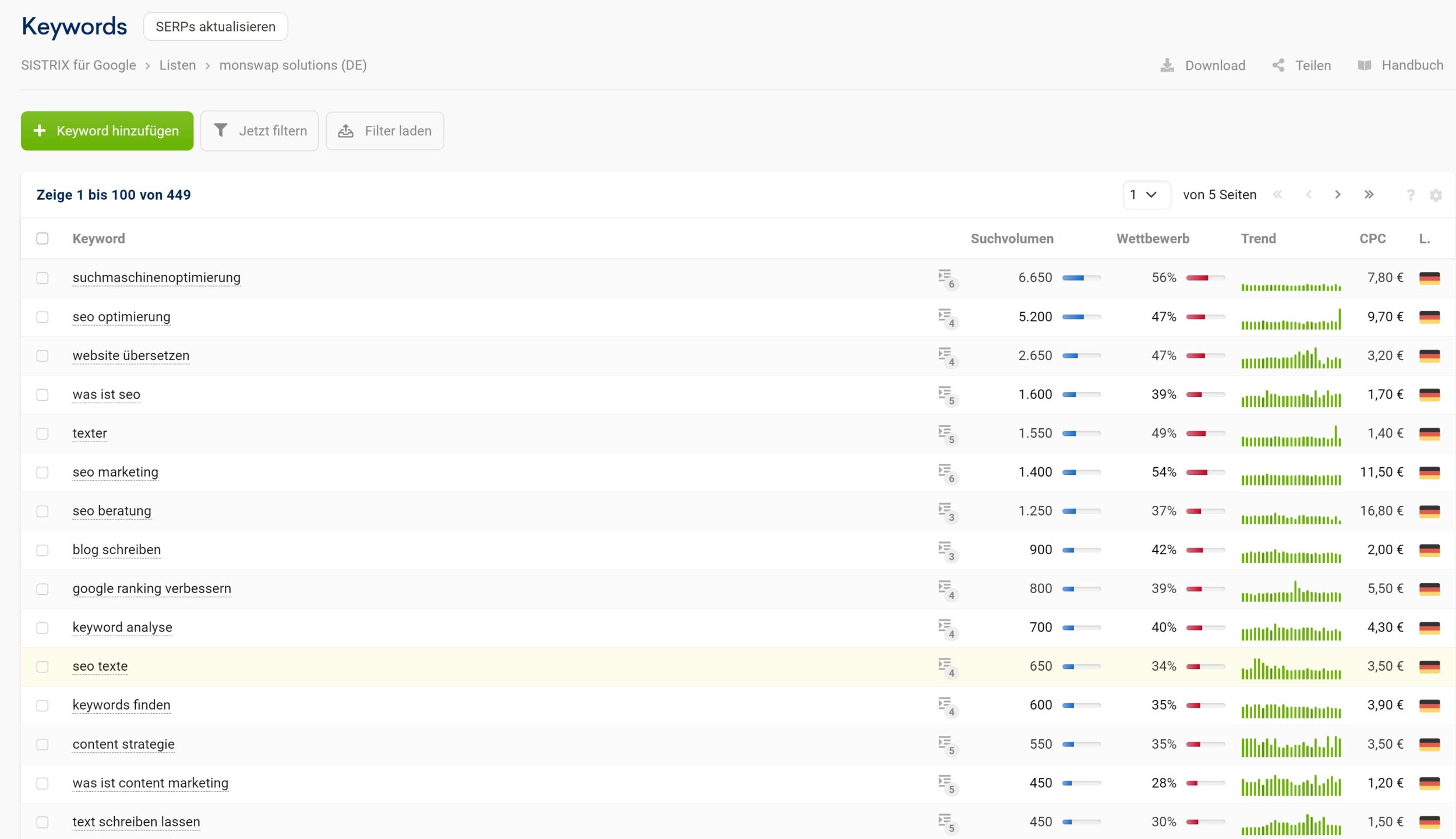
a) Asking clients
Before starting a new SEO strategy, I send my clients a questionnaire. The answers tell me everything I need to know about their business and their website. I use this information to get them to page one of Google.
One of the questions is ‘What phrases would you type into Google if you were a potential customer looking for what your company offers, without knowing your company?’.
I start my SEO keyword research with this list: I enter each keyword into Mangools. Is there search volume? Are there any interesting related keywords? If so, I copy the relevant search terms over to my keyword list in Sistrix.
b) Pull keywords from the existing website
Looking at Sistrix, you can see exactly which keywords your website is already ranking for. I then select all the relevant keywords and add them to our keyword list. (At this point, I weed out the keywords that are not relevant for your SEO.)
c) Competitors’ keywords
In my questionnaire, I also ask my clients to name their competitors. In addition, Sistrix also suggests competitors to me. I enter each of these domains into Sistrix – one by one – and copy their relevant keywords over to my keyword list.
d) Common sense
This is where it gets tricky. That’s why I’m pointing this out explicitly. From the questionnaire, I know what services or products my customers offer. If a topic that is in there but not on the current website or on the competitors’ sites, it means that there’s a gap, a so-called keyword gap. And we don’t want that.
Then I go back to Mangools and start typing in possible keywords that people might use to search for those missing topics.
Now we have a keyword list of 50-500 relevant keywords – depending on the industry there may be more or less. If you don’t find more than 50 or 100, don’t get frustrated: especially in the B2B sector, with niche topics or for start-ups, there are often simply no more.
That’s fine. Work with what you have.
And of course, you will never find 100% of all relevant keywords. New keywords often emerge during the development of an SEO strategy, during clustering or even while writing SEO content. I then add these to the keyword research so that it is always up to date and my clients can continue to do a good job with it.
Step 2: Cluster those keywords
Once I have found all the relevant keywords, it’s time to cluster, or summarise, them.
a) Keywords with the same meaning
First, I group together keywords with the same meaning: ‘international keyword research’, ‘keyword research international’ and ‘international seo keyword research’ are simply variations of the same. Anyone searching for one of these keywords has the same search intent in mind.
In this case, I will set the keyword with the highest search volume and the least competition as the ‘main keyword’ in this cluster. Then I copy all the other keywords into the ‘Synonyms’ column and also order them within the cell based on search volume/competition.
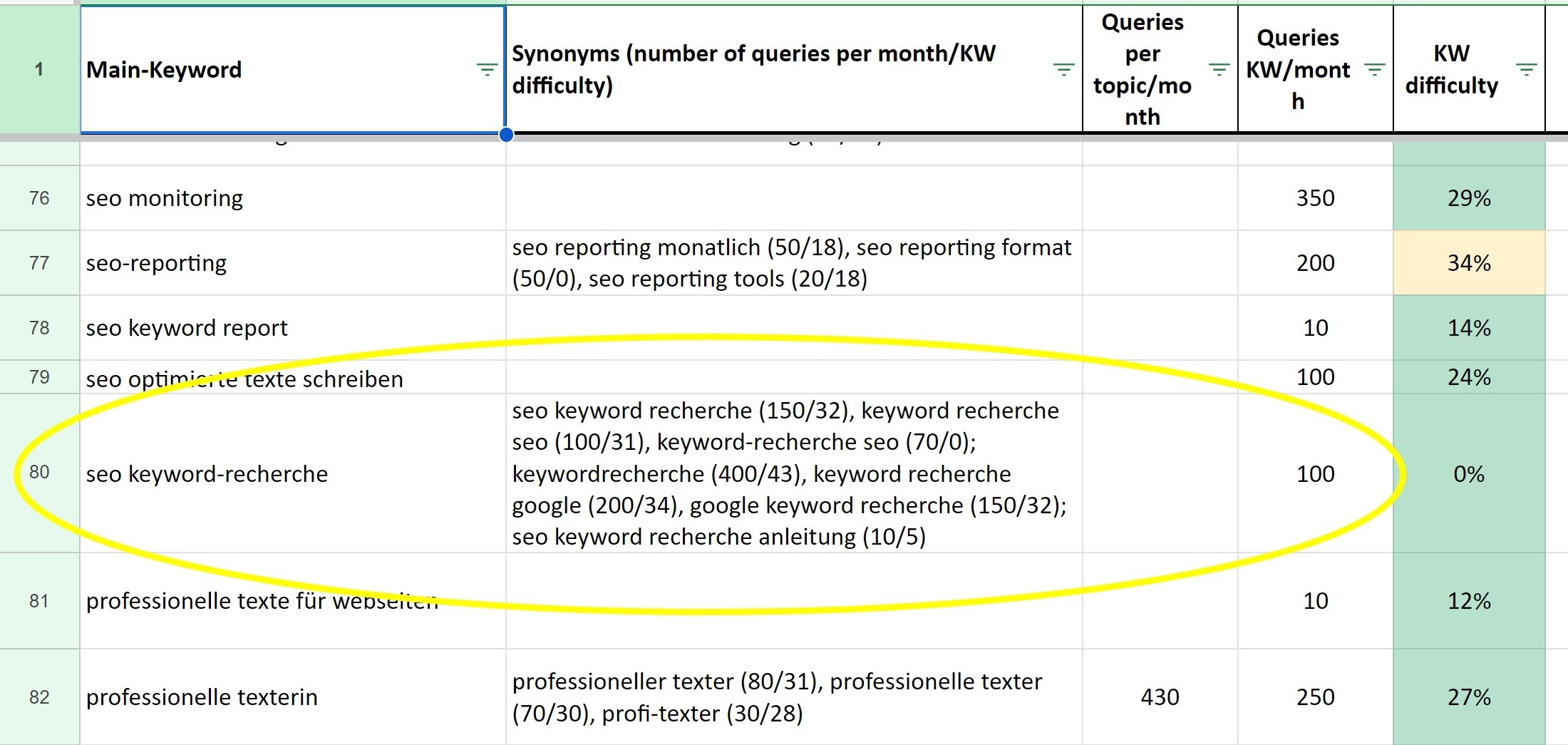
b) Related Keywords
During my research, I also came across other SEO keywords: ‘keyword strategy’, ‘keyword translation’ and ‘SEO keyword tools’. These also belong to the broader topic of ‘keyword research’, but they have very different search intentions.
And so I categorise them into different topics: strategy, translation and tools.
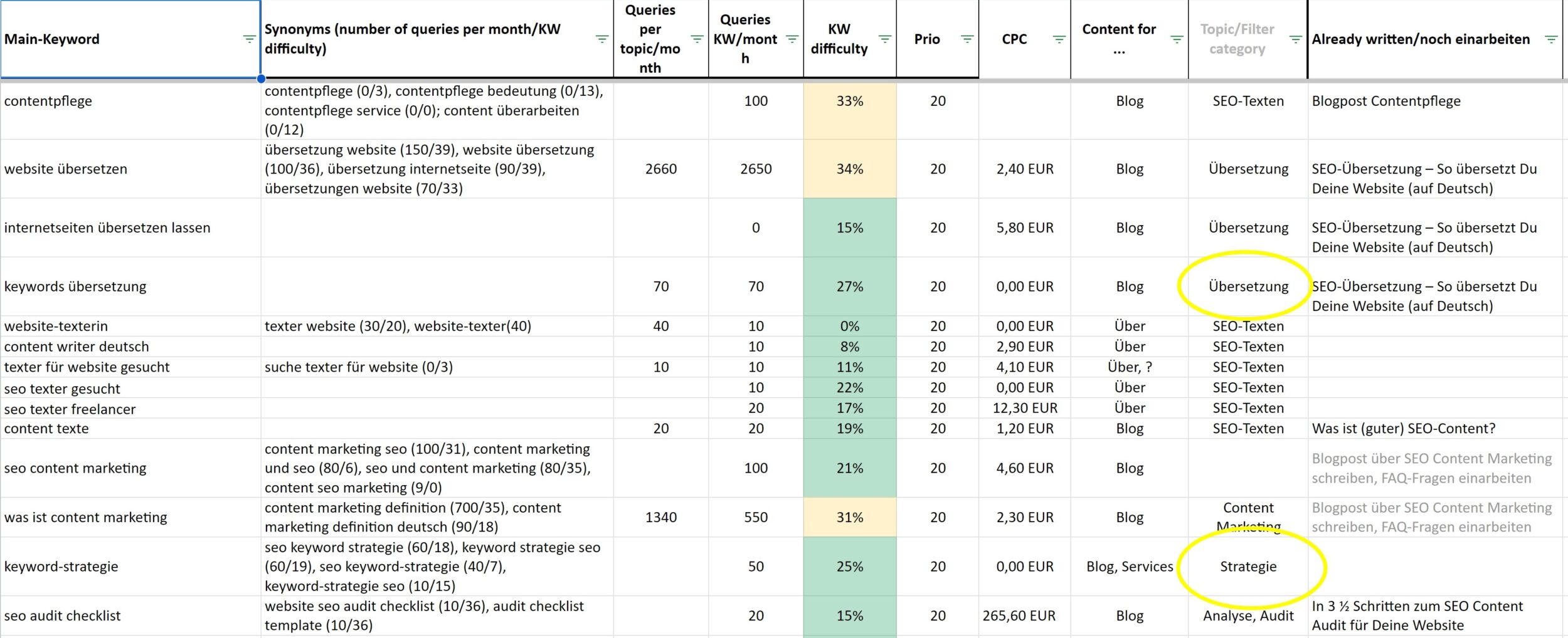
At some point, all keywords are either assigned to a suitable cluster or topic, or they remain as individual keywords because they cover a very specific search intent.
This step is now complete.
Step 3: Sort by relevance (prioritising)
The next step is perhaps the most complex in keyword research:
Which keyword is the most important for your website, which is more of a side issue – and which is irrelevant and should be removed?
An example from my own SEO strategy: ‘german seo copywriter’, ‘international seo consultant’ and ‘professional copywriter’ may sound similar at first. But to me, as a German-speaking SEO copywriter, they are all equally relevant.
Or are they?
“german seo copywriter”
In this case, someone is looking for a native German copywriter who speaks English and can write German content according to SEO criteria for the searcher. It is a specific search and the searcher is looking to start a collaboration.
Relevance: 100%
“international seo consultant”
In this case, someone is looking for an SEO consultant who can help their business with an international SEO strategy. But they could be from any country in the world: USA, Korea, Denmark. Not a word about German SEO. However, the person still wants to hire a professional SEO consultant who speaks English – so I will still be able to help them.
Relevance: 70-80%.
„professional copywriter“
This is where it gets tricky! The searcher is looking for a professional English-speaking copywriter. As I have a large network of native English speakers, but I cannot write in English at a native level myself (as you have probably noticed), this keyword does not really make sense for my website.
Relevance: 20%.
I use these criteria to evaluate each keyword. In the end, my SEO keyword research will range from ’10 = core keywords’ to ‘100 = not important, can be left out’.

And now?
Congratulations, now you have an international keyword research in front of you!
Be sure to repeat this process for each target language, and either have a native speaker do the research or consult with them at each step.
At this point I would start to develop an international SEO and content strategy. If you like, you can read my blog post ‘Content Strategy for SEO ‒ in 5 1/2 steps’ to find out how I go about it.
And if you need advice or support, I am happy to take on your international keyword research. You know where to find me.
What clients ask me about international keyword research…
You should use keywords that match your product or service as well as your target audience in each country. You can find out which keywords to use through international SEO keyword research. (I explain how to do this above in this blog post.)
The key to international SEO keyword research is to treat each target market individually, while still aligning them and having them work towards the global business goals. Make sure to choose search terms with high search volumes and little competition. You can also use long-tail keywords, which are combinations of several words, to appeal to specific visitors.
A free tool for SEO keyword research is Google Keyword Planner. You can use it to see search volume and competition for keywords. Ubersuggest also offers a free basic version.
These tools are perfectly adequate to get you started when first building your international SEO strategy. If you research keywords on a regular basis, you should consider the paid versions. These give you more keywords and features.
Saving time is all about the right tools and a streamlined process.
Use an efficient keyword tool that aggregates data from multiple countries in one interface, like Sistrix, SEMrush or Ahrefs, so you don’t have to switch platforms. Create a clear research structure by focusing first on broad, high-impact keywords, then narrowing down to niche keywords by region. This approach lets you quickly identify valuable keywords without getting bogged down in unnecessary data.
To save even more time, you could outsource keyword research to an international SEO expert like myself.





